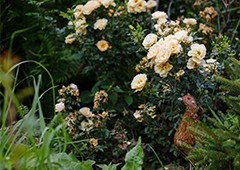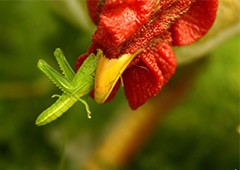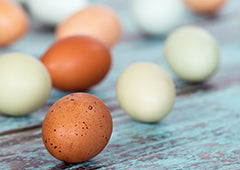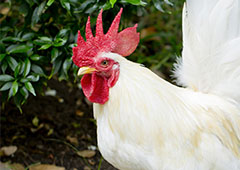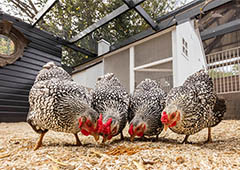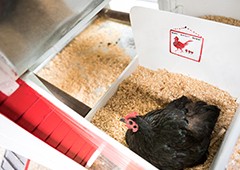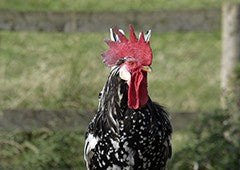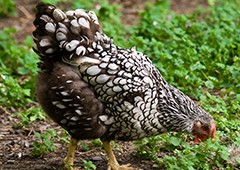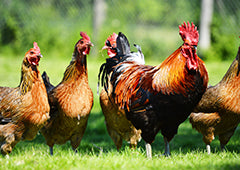Let’s be honest, radishes don’t normally whip people into a verbal frenzy. It’s not that people have anything against radishes, it’s just simply difficult to find much to say about them. However, a more enquiring mind could tell you a great deal of interesting, quizzical and profound facts about the planting, growing, harvesting and eating of radishes if you gave them the time of day. After all, renowned playwright, existentialist and all round smart guy Samuel Beckett once said, “What do I know of man’s destiny? I could tell you more about radishes”. So, in this spirit of wonder, curiosity and intrigue, this article will detail for you an array of practical, curious and compelling facts about radishes, which may inspire you to look more carefully at this mysterious vegetable.
What’s the deal with radishes?
Radishes are a cruciferous vegetable, like broccoli and cauliflower, which are famous for their nutrient dense properties that help prevent an array of illnesses, from the common cold to cancer. Radishes are believed to have originated in China, but spread widely into many of the dominant ancient civilisations, from Greece to Egypt, before travelling across Europe and eventually making its move in America by the 17th century. They are commonly served raw in salads or lightly cooked in stir-fries, adding a pungent, sweet and occasionally peppery flavour to any meal, with a crisp and crunchy texture.
Why are radishes so good for you?
A radish carries in its flesh an abundance of powerful nutrients, minerals and vitamins, which play their part in boosting your immune system and diminishing the nasty effects of free radicals on the body. In particular, radishes are a dense source of fibre, potassium, and manganese, as well as vitamins such a C, B6 and K, which will ultimately help with digestion, detoxifies the body and also alleviates cold and flu symptoms. Radishes also help treat and prevent conditions such as liver, gallbladder, urinary and kidney infections, as well as constipation, piles and is especially very effective for treating jaundice.
What are some of the different types of radishes?
As is often the case with every type of vegetable, there are a lot of different varieties on offer. Here is the lowdown on some of the more popular varieties of radishes on offer…
Black radishes: as the name suggests, it has a black exterior with snowy white flesh. It has a sharp taste with plenty of bite when served raw, which mellows substantially when cooked.
Daikon radishes: a pale cylindrical plant that vaguely resembles a carrot in shape, which is normally served either pickled, dried, roasted or even grated into soups.
Watermelon radishes: a beautiful variety of radish with green skin and a vibrant reddish pink flesh. Probably best to serve it either in a salad or cut into wedges and served raw.
White icicle radishes: has a rich spicy flavour that tends to be milder than red radishes and is very popular in cooking. Normally grows to 12 to 20 cm in length and closely resembles the Daikon radish in appearance.
Cherry Belle Radishes: has cherry red skin and brilliantly white flesh. Round, smooth and small these plants are best grown in cooler environments. They have a popular flavour and are very adaptable.
There are of course even more types out there but these five will give you a clear idea of some of the more popular varieties, as well as the different kinds of radishes that are available.
Will my chickens eat radishes?
Your laying hens will love munching on some fresh radishes. Most people don’t eat the radish leaves but your cheeky chooks will be over the moon if you pop these scraps into the coop. Also, if you decide to treat them to a whole radish, be sure that you cut it up into smaller chunks, otherwise they might have trouble nibbling on it. Radishes will also help keep your girls hydrated, which is especially important during the hot Australian summer, so be sure to throw one into the coop when the temperature really starts to rise.
How do I prep radishes?
Slicing up radishes is by no means a culinary challenge, but if you are not accustom to cooking with them, you might cock your eyebrow upon looking at them on the chopping board and think, ‘what do I do now’. Here’s what you need to know…
-
Most people don’t eat the leaves so just simply cut them off and give them to your chooks.
-
If you have a small bulbous radish, simply cut to down the middle. From here it’s up to you whether you want to divide it in half again to make juicy wedges or slice it thinly into half-moons, which might be more suitable for a salad.
-
It’s also common practice to finely grate radishes so that they can easily dissolve into a soup. This is of course done by simply grating the radish with a standard grater.
-
Longer more cylindrical radishes, like Daikon radish, can be prepared however you like but are easily be diced. View the video below to see how easy it is to dice Daikon radish.
-
Cut off the leaves before you store them in your fridge otherwise your beautiful radishes will dry out.
-
Soak your radishes in cool water to help increase their crispness.
How you prepare your radishes really just depends on what you are planning to cook. Many people simply dice or slice their radishes so that they can mix it through in a salad, however it’s also possible to roast, fry and pickle radishes to create all kinds of culinary wonders.
What are some of the ways I can use radishes in cooking?
The ancient Egyptian slaves who built the pyramids existed on a diet of raw radish, garlic and onions. Consider yourself lucky that you’re not an ancient Egyptian slave, because there are many unique and different ways to cook radish outside of eating it raw or mixed through in a salad – though there is nothing wrong with that if that’s what you like. Here are a few radish inspirations that should preheat the oven of your culinary creativity.
-
Radish kimchi
-
Radish hash browns
-
Cinnamon sugar radish chips
-
Radish detox smoothies
-
Mooli ka paratha (radish flatbread)
So, if you’re a fan of radishes why don’t you try something radical next time you strut into the kitchen with a green bag full of these freshly harvested little wonders.
When is the best time to plant radishes?
Radishes are an extremely fast growing root vegetable that requires a lot of sun to grow at their peak. Though Australia is generally sunny all year round, radishes still tend to grow best in both autumn and spring when the temperature is just right. Good news is radishes grow so quickly that you could produce a whole mountain of them before the season is over.
What do I need to know about growing radishes?
As mentioned previously, radishes grow at an almost alarming rate, making them perfect for kids who will love to follow their quick growth! Generally speaking, it will only take a radish 5 to 7 weeks to reach maturity. This being said, your radishes won’t grow at all unless you’ve got to correct conditions in your backyard…
-
Radish seeds need to be planted approximately 1 to 2 centimetre deep in light, sandy and well-drained soils, however they can grow in almost anything.
-
Make sure you mix some chicken manure through the soil several weeks before planting, as this will inspire your seedlings to thrive immodestly.
-
Ideally, the soil temperature should range widely between 8 to 30 degrees Celsius – so that shouldn’t be too hard to manage.
-
Make sure you don’t overcrowd your radishes, so be sure to keep them at least 3 to 5 centimetres away from each other, in rows that are separated by at least 20 centimetres.
-
Sometimes it will only take your radish seedlings as little as 3 days to sprout their heads above the soil.
-
If your radishes are not getting enough sun their leaves will continue to grow bigger and wider, which is only wasting energy. In this event, continue to remove some of the larger leaves and plant your seeds in a sunnier location next time.
-
Aside from regular watering you really don’t need to worry about your radishes too much.
Let me assure you that when the time comes for you to harvest the fruits of your labour, the moment will be as epic as that scene from ‘Gone with the Wind’ when Scarlett O’Hara pulls a radish out from the ground and declares, “As God as my witness, I will never go hungry again!”
How do I pick a quality radish?
Whether you are in the supermarket or harvesting in your own backyard, there are a few key signs that you need to look for when selecting a quality radish…
-
Larger radishes tend to have a softer, less crispy texture, which for most radish lovers is not desirable. So, don’t let them grow too big.
-
Give the radish a squeeze and if it isn’t firm you can bet your bottom dollar that the radish is going to be a little spongy on the inside.
-
Blemishes are also a good indicator of a radish's quality. So, if it looks like an acne prone teenager, maybe leave that one for last or give it straight to your chooks.
-
The green leaves attached to the radish should look fresh and perky at the point of harvest or whenever you pick it up from the store.
The basic rule is if it looks delicious, it is likely to taste delicious.
So, whether you’re planning on simply growing radishes to toss into a salad, create a detoxifying smoothie or maybe you intend to carve them into little statues like they do in Mexico on ‘Night of the Radishes’ (yes, it’s a thing), there are plenty of reasons to grow radishes in your garden. One way to ensure your soil is ripe for production is to get some healthy chooks who will exponentially improve the quality of your garden soil. Your girls are going to need a place to live, so be sure to check out our Taj Mahal, Penthouse and Mansion coops.







